In this post we selected for you some addition math activities, to work with students of the 1st year. All educational math activities are free and available to print in excellent quality.
Addition can be used as a synonym for addition: the arithmetic operation that consists of adding quantities until you get a result.
Suppose we want to add 4 and 8. This operation is an addition whose result is 12.
in other words: 4 + 8 = 12.
See too: 1st year math activities
Index
are you looking for math activities recommended for students of first year of elementary school? Check out our updated selection, responding to requests from our users:
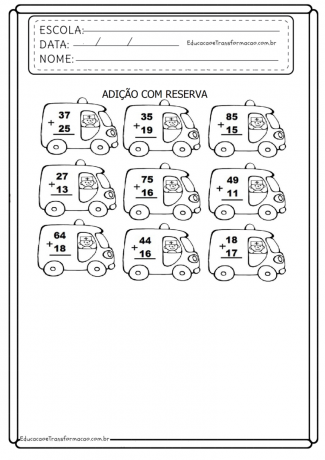

Check out some addition activity sheets, illustrated with animal figures. To access the material, check the following link:
Activities in PDF for download:
Addition activities with reservation and 3 installments, ready to print and apply inside and outside the classroom.


To make it easier for you when saving, we also recommend these Illustrated Addition Activity Sheets, for free download in PDF. To access, check the following link and download:



How about checking these too Math Activities 1 Year Numerical Sequence?
Teaching a child the concept of addiction is the first step to a well-rounded academic future.
Ideally, first graders should already know how to add (and subtract) numerals up to 20.
Children respond well to visual tools that help them understand concepts. Almost any object will do, from beans to books. Start with a small number and try out different tactics to demonstrate number relationships:
I also recommend:List of 1st year, 2nd year, 3rd year, 4th and 5th year math activities to print.



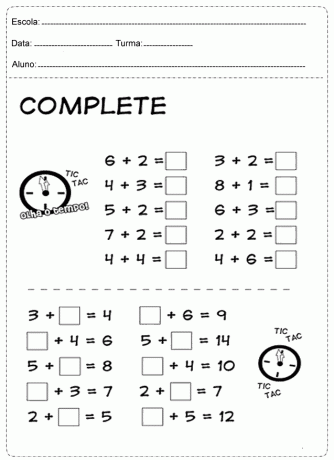
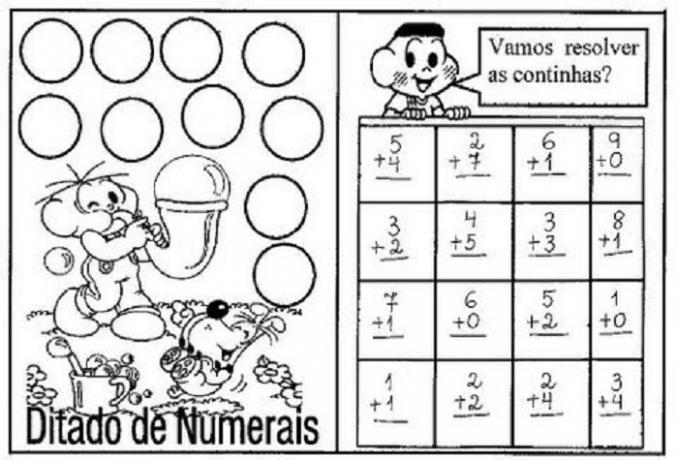

Using playing cards, we will teach addition in a playful way.
1-) Identification:
Theme: Adding 10
Subjects involved: Math
Contents: Numbering system, quantities and measures, quantification, problem solving, attention and observation, socialization and autonomy.
The teacher will present the cards from 1 deck to groups of 2 to 4 players, then ask them to separate the cards from 1 (A is 1) to 9 with the 4 types of suits, totaling 36 cards.
The objective of the game is to make pairs with cards that add up to the result 10.
The game should start with one of the players shuffling the cards and placing 10 cards face up on the table. The other cards will lie on the table in a pile, face down.
The first player must turn over a card from the stock and try to add it to one of the cards on the board, in order to pair it with a total of 10. If he does, he will keep the pair for himself, if he cannot add, he will leave the card on the table, face up, next to the others, passing to the next player.
The teacher should intervene in the groups, asking if there really isn't any card on the table that it is possible to add 10 or if the pair formed by the player actually added 10.
It is also necessary to encourage the other players in the group to help the teammate with the sum of their cards.
The teacher's role during the game is to move between the groups, questioning the students' moves, making them think about the results and understand their strategies.
When the cards run out, players must count their pairs or do a stack comparison to see who is the winner.



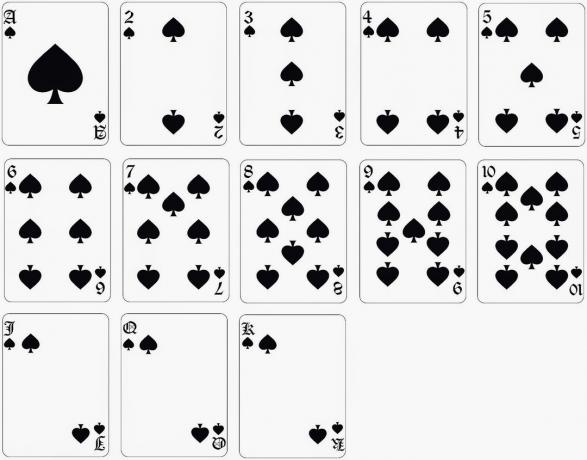
Observation by the teacher of the strategies and sums performed by the students.
Mathematics in Children's Daily Life – Games and activities with children aged 3 to 6 years for the development of logical-mathematical reasoning.
Author: Sílvia Marina Guedes dos Reis.
Papirus Publisher



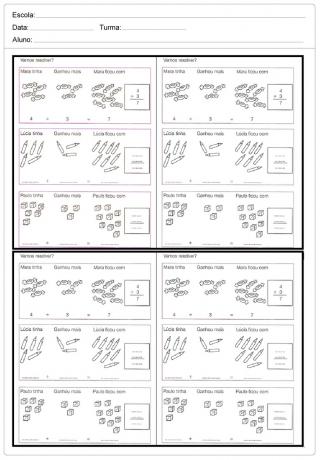
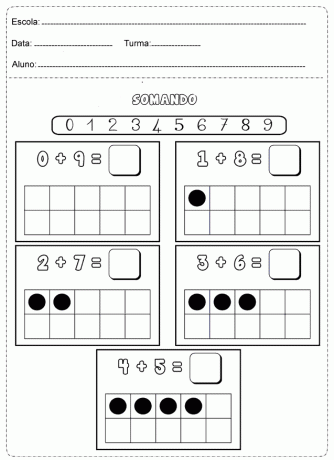

2020 Update:
Always thinking of making it easy for you, we decided to make available some activities posted above for free download in PDF.
For full access check out the following link:
What did you think of the post "Addition Math Activities”? If you liked it, be sure to share it with your friends on social networks and also leave a comment with your opinion and suggestions for other posts.
Subscribe to our email list and receive interesting information and updates in your email inbox
Thanks for signing up.

